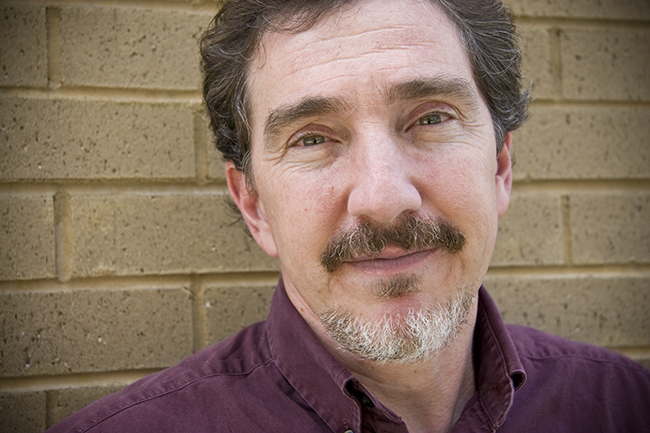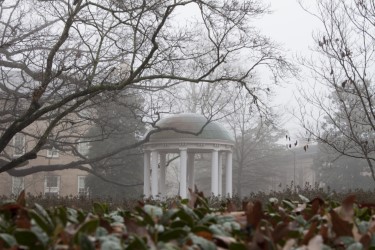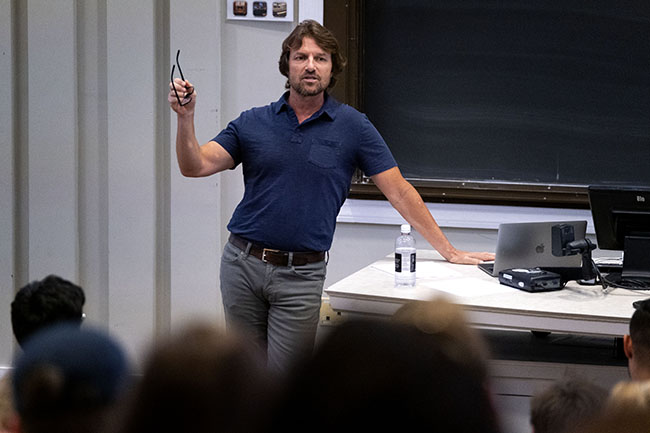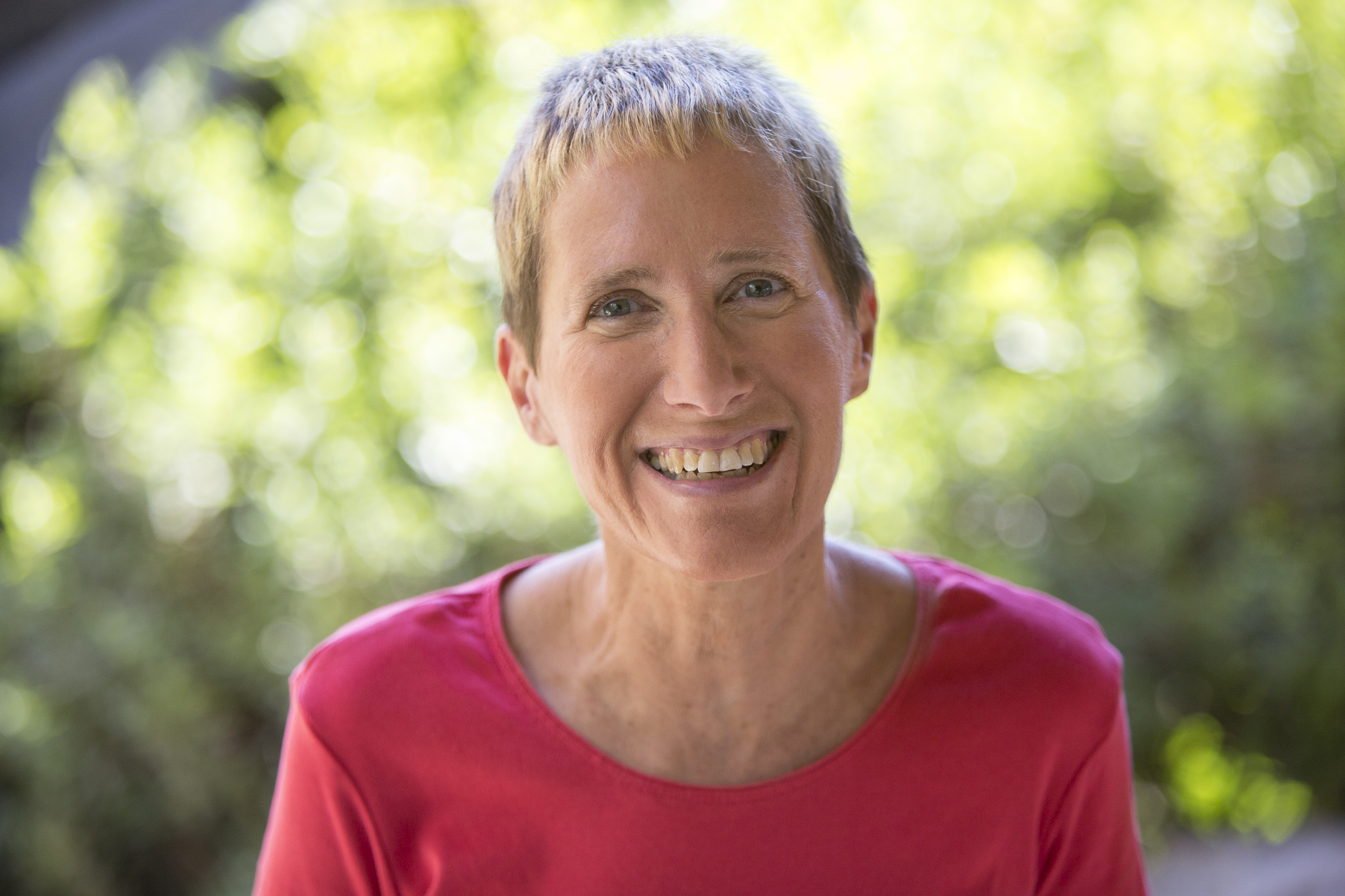
Archaeologist Jodi Magness of the University of North Carolina at Chapel Hill will be featured on the big screen — literally — in the new IMAX 3-D movie, “Jerusalem.”
Magness is the Kenan Distinguished Professor for Teaching Excellence in the department of religious studies in UNC’s College of Arts and Sciences. She specializes in early Judaism and the archaeology of Palestine and is an expert on the Dead Sea Scrolls.
“How should we approach Jerusalem,” the narrator says as the film trailer opens, “a city that for thousands of years has been regarded as the center of the world?”
The film seeks to highlight the city from different points of view — Jewish, Christian, Muslim and secular — said Daniel Ferguson, a producer, writer and the film’s director, who is based in Montreal.
“IMAX is so experiential and visceral,” said Ferguson, who has visited Jerusalem about 14 times. “People will see a side of Jerusalem they could never have seen as tourists or even living in the city.”
“We wanted to explore, ‘Why is there such global interest in Jerusalem?’ ‘Why is it key to peace in the region?’ ‘Why is there so much media attention still devoted to it?’ We wanted to unpack those questions that make it enigmatic to so many different cultures.”
The film is tentatively scheduled to debut in Boston in summer 2013, a number of museums and science centers throughout North America in fall 2013, and Charlotte in January 2014.
A passionate expert
According to the film Web site, Jerusalem has more than 2,000 archaeological sites. Since filming began in 2010, the production team has followed several of the most impressive excavations in and around Jerusalem, documenting the work there as well as the tools used to uncover history.
Producers first contacted Magness about three years ago. She will be featured in the film and serves as a historical consultant on the script. She has appeared in numerous documentaries on the National Geographic Channel, the History Channel, the Discovery Channel, PBS and the BBC.
Ferguson called Magness “a natural” when it comes to being on camera.
“I wanted someone who could appeal to young people, who was enthusiastic and a good communicator and educator,” he said. “Her passion is infectious; she was perfect.”
A stunning discovery
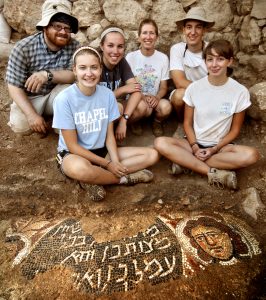
In summer 2012, Magness was continuing archaeological excavations at Huqoq in Israel’s Galilee. There UNC students and students from partner universities uncovered a beautiful mosaic floor decorating a monumental, late Roman-Byzantine synagogue building (ca. 4th to 6th centuries C.E). The mosaic contains a Hebrew or Aramaic inscription flanked by female faces, and a scene depicting Samson and the foxes (an episode described in Judges 15:4).
Jocelyn Burney, a UNC junior archaeology and religious studies major, had a chance to participate in the Huqoq dig. She was there when the discovery, which was covered by international media, was made.
“We didn’t expect to find such big mosaic pieces of such high quality,” said Burney, who was digging at the village site, about 100 feet away from the synagogue site. “This is very extraordinary. I remember the moment and thinking it was absolutely incredible.”
Lights, camera, action
Because of timing issues, producers were not able to film at the Huqoq dig. But they did film a lot of amazing material, Magness said, including shots of her and students touring Hezekiah’s Tunnel, an ancient Biblical water system that still has water flowing through it.
At 1,750 feet long, Hezekiah’s Tunnel carried water from the Gihon Spring outside the city walls to the residents of the city in the event of a siege by an invading army.
James Heilpern, one of Magness’ students who graduated in May 2012 and is now a law student at Brigham Young University, participated in the filming at Hezekiah’s Tunnel, along with his wife, Kindra.
When you visit any historical landmark, you get that feeling that something important happened there, Heilpern said, but Jerusalem is particularly special.
“Anywhere you stand, anywhere in that city, you know that not just one important thing has happened, but dozens of things. You are standing on a piece of land that may be the most valuable piece of real estate in the world,” he said. “Over the last two years, I’ve developed fabulous relationships with both Israelis and Palestinians. … It has been a significant experience in my life to not only experience those sites as a Christian, but to experience the religious sites of other faiths.”
Jerusalem is considered a “no-fly zone,” so producers had to work for many months to negotiate with various Israeli ministries, military, police and counter-terrorism officials to shoot aerial shots of the city. Ferguson said it’s the first time in about 20 years that an aerial camera has been allowed so close to the city’s holy sites.
Love of archaeology
One of the questions Magness was asked during the filming was how she got interested in archaeology. She’s been a budding archaeologist since age 12.
“When I was in seventh grade, I was finding fossils of shells at Girl Scout camp, and I had a good world history teacher,” she said. “I fell in love with ancient Greece. Ever since then, (the discovery of) that ancient classical world, I have wanted to be an archaeologist.”
“My parents kept hoping it was another phase I was going through,” she added, laughing. “Now they’re OK with it.”
Jonathan Hess, professor and director of the Carolina Center for Jewish Studies, said Magness is one of the most popular teachers in the College of Arts and Sciences.
“Known as an extraordinary teacher and mentor, Jodi is one of those Carolina faculty members who truly touches students — from students in her large lecture courses to graduate students whose Ph.D. work she supervises,” Hess said.
Magness will discuss the Huqoq mosaic discovery at a Carolina Center for Jewish Studies free public talk Jan. 28 at 7:30 p.m.at UNC’s William and Ida Friday Center for Continuing Education.
Magness said it’s easy to share her passion for archaeology with her students.
“I love what I do, and I’m lucky to be able to do that for my job,” she said. “It’s a really interesting time and place in the world to study. … It’s at the heart of a liberal arts education — when you expose students to all kinds of different things they might not have known about.”
Sign up for updates on the film Web site or Facebook page.
—–
Jerusalem By The Numbers
- 2,000 archaeological sites
- 40 languages spoken by the residents of the Old City
- 80 different nationalities of Jews call Jerusalem home
- 4 seas surround Jerusalem: Dead Sea, Mediterranean Sea, Sea of Galilee and the Red Sea
- 24 football fields could fit on the top of the man-made esplanade referred to by Jews as the Temple Mount and by Muslims as the Noble Sanctuary
Sources: http://www.jerusalemthemovie.com, Municipality of Jerusalem, The Jerusalem Past, The Jerusalem Institute for Israeli Studies
By Kim Weaver Spurr ’88

